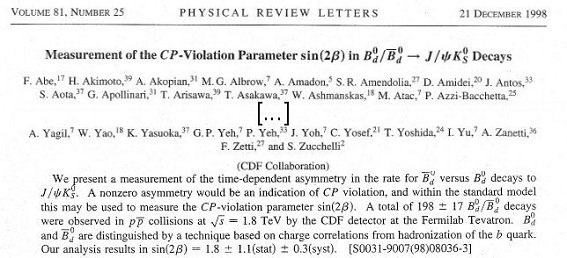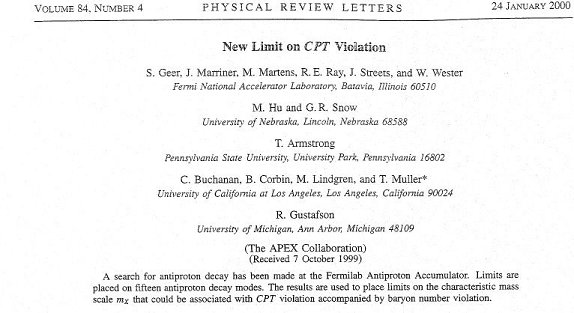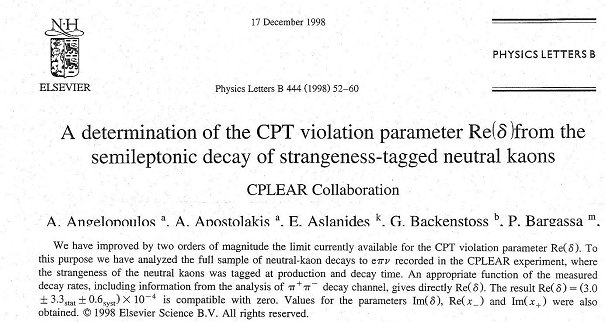Parity
1. We believed, until 1956, that, with the change of the the electric charge, elementary particles behave in the same way. For example, in beta decays, electrons or positrons should be emitted in all directions.
The experiment with 60Co decay showed that it is not true: electrons are emitted in the direction opposite to the magnetic field and the spin of the created anti-neutrino is oriented parallel to its propagation direction (it is right-handed).
This conjugation between spin and propagation direction proved to be an intrinsic part of all weak interactions, like the muon decay. [Garwin, Ledermann and Weinrich, Phys. Rev. 105 (1957) 1415]
 |
The 60Co nucleus decays into 60Ni, emitting an electron. As the spin of the two nuclei differs by -1, the total spin of the antineutrino and the electron must by -1. Antineutrino is always right-handed (the spin parallel to its momentum). The electron emitted is polarized, with the spin antiparallel to its momentum and always downwards the B. |
2. Then, we believed that changing the charge and the direction of rotation (i.e. parity) this combined CP symmetry is preserved.
The experiment on K mesons in 1964 showed that it was not true: long lived mesons should not decaye into two pions but they do. about one out of 500 long-lived mesons K0 "change in flight" its parity to CP=1 and dies quicker. CP parity is not
conserved!
With the CP symmetry conserved, the short lived kaon KS decays into two charged pions, and the long- livedKL into three neutral pions. The decay of KL into two pions can indicate the CP violation, but not directly – the KL kaon could have converted itself into the KS type just before the decay. The probability for this process, observed in 1964, is 2x10-3. If we are sure that this is the KL kaon which decays into two pions, we get a direct proof for the CP symmetry violation. The share of the direct CP violation in all three-pion decays of KL is also 2x10-3. |
|
3. We still believe, that inverting together the charge, the parity and time arrow we preserves the total, CPT symmetry. The charge-parity-time symmetry seems to be proved also by all recent experiments. Moreover, as CP is broken, also time symmetry should be broken. It was shown explicitly in a recent CERN experiment on kaon decay. Decay of heavier, bottom quarks, violates the CP symmetry even more than the decay of strange kaons. A conclusion on CPT conserved and CP broken? Our left-handed antimatter twin gets younger every day!




